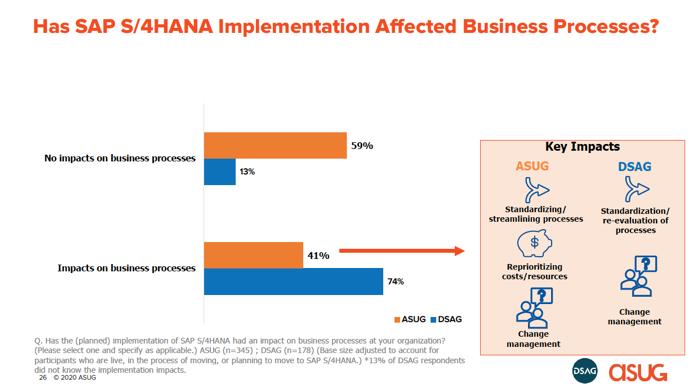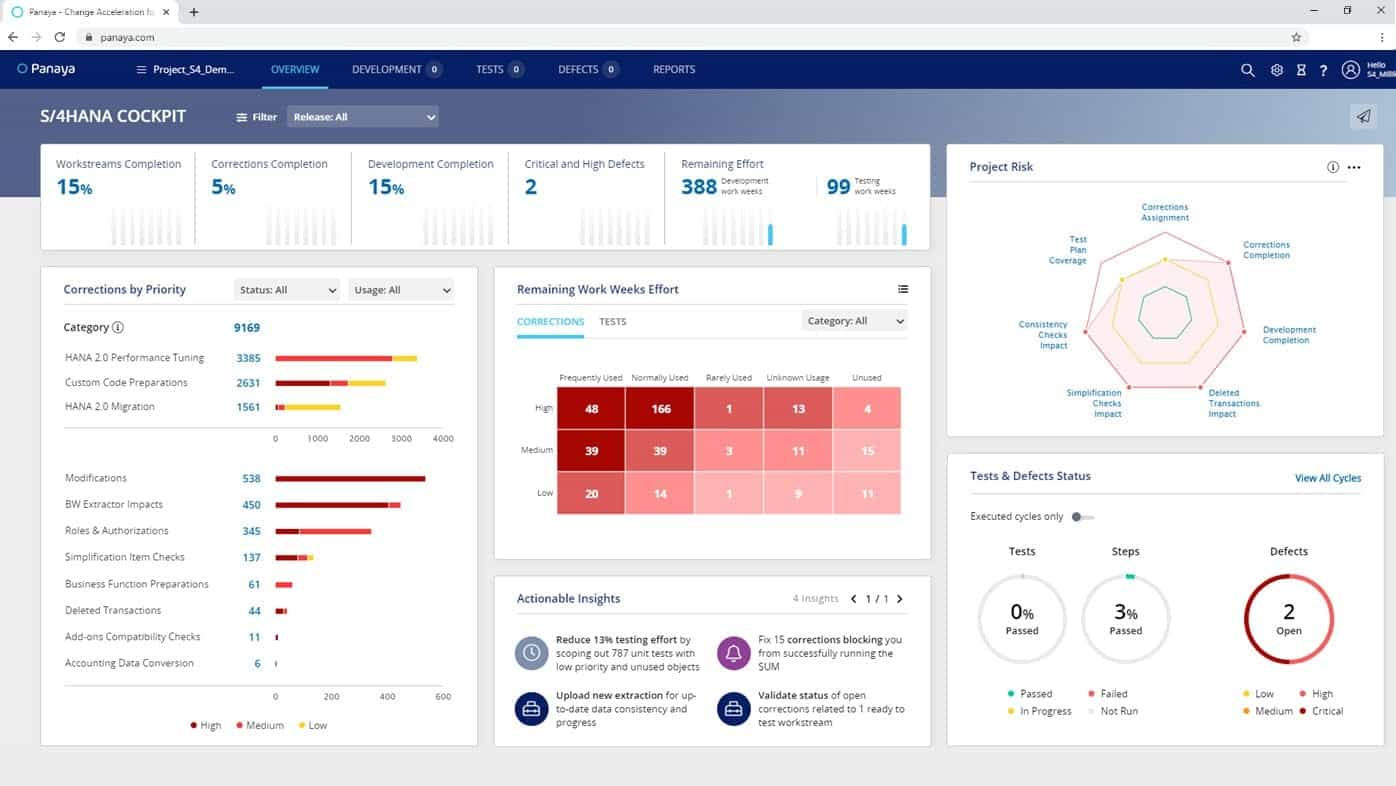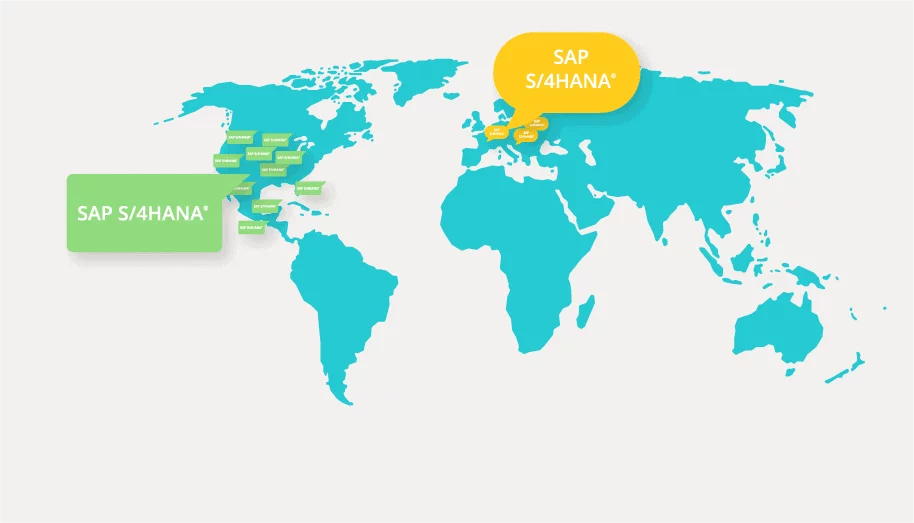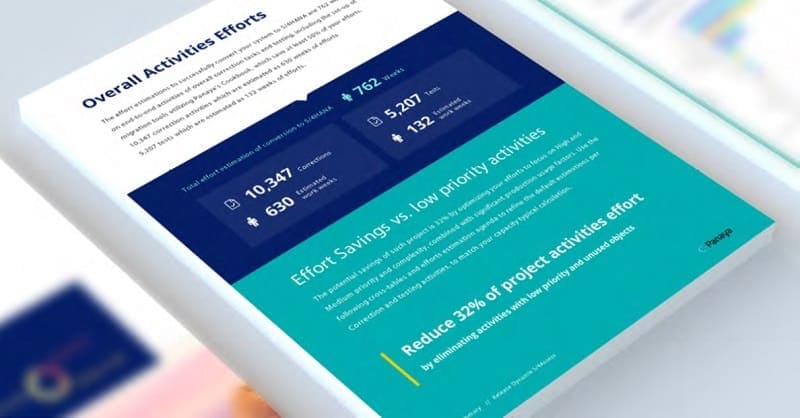Table of Content
A 71% adoption rate of S/4HANA amongst ASUG (Americas’ SAP Users’ Group) members was measured by a first-ever joint survey of SAP users in the two largest SAP user groups globally, ASUG and DSAG (the German-speaking SAP User Group).
According to the survey, the vast majority of respondents have accepted that a move to S/4HANA is inevitable. For those who have already started reaping the benefits, optimization of existing business processes and removal of unnecessary code score highest on the DSAG list, while performance and faster innovation are perceived as top benefits at ASUG.
Cultural Differences Influence Buying Decisions
The survey covers the current state of SAP S/4 adoption, intentions, and issues. It surfaces important differences reflecting the cultures that influence decisions. For example, support and cost are top of mind topics when making SAP buying decisions but peer and partner recommendations are much more meaningful to ASUG than to DSAG members.
Tell Me the Impact – I’ll Guess the Approach
Among ASUG respondents 59% said the implementation had no impact on business processes compared with 13% of DSAG respondents. In DSAG, where there are impacts, it is mostly around standardization or streamlining of processes and change management (see below), so we can assume Greenfield is more common in German-speaking countries.

Impact Is a Challenge When You Lack in Change Management
Judging from the survey, the complexity of the move remains the main barrier to S/4HANA implementations. More delays can be attributed to the current COVID-19 crisis. SAP system has a known gap when it comes to change management and so, the challenges of defect management and the risk of implementation failure are major deterrents.
User Groups Are Vocal about the Complexity of Achieving Simplicity
The optimization of business processes seems to be a double-edged sword. While appealing, it is difficult to attain. DSAG board member Otto Schell said. “The S/4HANA capabilities go beyond what current legacy systems offer, so organizations must change business processes before they can take full advantage of the new capabilities.”
“You have to break down the wall between [functional areas like finance and controlling],” Schell said. “If you want to look into things like machine learning opportunities, you need to go back to the organization and they have to apply changes to the organization. But to get to this point, you have to go much deeper into business processes, and that’s why it may take longer to get to S/4HANA.”
Geoff Scott, ASUG CEO was quoted saying “The last thing that customers want to do is rush an implementation and then find out that it’s not accurately reflecting their business processes, and then have to back that up to get the business processes back up and running,” he said. “It takes time to think through business processes in a different way in order to modernize them.”
How Does SAP Address Complexity?
For users’ convenience, SAP has put together a Simplification Items list, consisting of many tasks. There are almost 1000 items on the list. They are categorized according to your target S/4HANA version. Not all items on the list are relevant to all SAP customers. The ‘Simplification Item Check’ is an SAP-provisioned tool designed to identify the simplification items most relevant to you. The output of the Simplification Item Check is also critical for successfully running the SUM (Software Upgrade Manager).
Everything in SAP S/4HANA is meant to be much simpler under the hood and so, ‘Simplification Item’ is SAP speak for a task you must complete to simplify your business processes. A Panaya webinar participant once made a comment that highlights the paradox in that. “In all the conversion projects I have participated in, the simplification items have been called “complication items.”
Is There a Simpler Way?
ASUG and DSAG members’ concerns are not misplaced. Moving your entire ERP system and business processes to a new platform is not trivial. It requires careful planning, effort estimates, system sizing, and quality execution. There are no shortcuts. However, there is definitely a simpler, safer way.
With over a decade of SAP ERP domain expertise and crowd wisdom, Panaya has
developed a solution to identify the impact of any business process modification.
We start with best practices for how to set up the S/4HANA conversion tools and which
reports to run. We then deliver an out-of-the-box project blueprint based on your current ECC solution customization and usage.
The Panaya Solution for S/4HANA System Conversion, S/4Convert lets you analyze the impact each customization will have on your S/4HANA business processes.
S/4Convert leverages SAP tools, best practices, and Panaya propriety Change Intelligence AI to analyze every element in your ECC system automatically.
The result is an end-to-end, ready to execute, conversion project plan, including all corrections and testing activities, based on your system’s customization and usage in less than 48 hours.

Change With Confidence
With out-of-the-box (OOTB) effort estimations for each category, your S/4HANA project manager has visibility into the overall efforts required on a module-by-module basis.
Panaya offers end-to-end, ready to execute custom project blueprint, with all S/4HANA system conversion corrections and testing activities, in less than 48 hours.
Leveraging SAP tools, best practices, and Panaya propriety Change Intelligence AI, to automatically analyze every element in your ECC system, Panaya S/4Convert is an easy to use Saas solution. Use it to proactively manage your SAP S/4HANA migration project. It includes automatic code correction, ready to deploy in a single click and a business process-centric test management platform, fully integrated with Worksoft Smart Test Automation.
Panaya S/4Assess
A tailored, end-to-end S/4HANA System Conversion Impact Report that will cover all your activities across all migration phases
SAP S/4HANA – START HEREWant To Learn More About Panaya?
- Check out our Resource Center
- Follow us on Linkedin, Twitter, YouTube and Facebook

